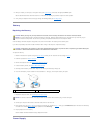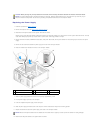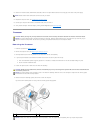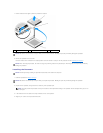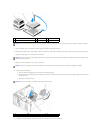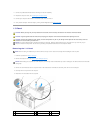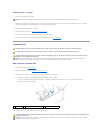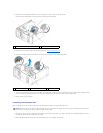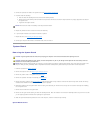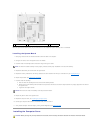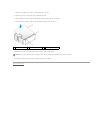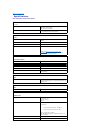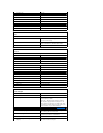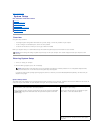
3. Connect the processor fan cable to the system board (see System Board Components).
4. Install the heat sink assembly:
a. Place the heat sink assembly back onto the heat-sink assembly bracket.
b. Rotate the heat sink assembly down towards the computer base and ensure that the two captive screws are properly aligned with the holes in
the system board.
c. Tighten the two captive screws.
5. Replace any cables that were routed over the heat sink assembly.
6. If your computer includes a card retention mechanism, replace it.
7. Replace the cover (see Installing the Computer Cover).
8. Connect your computer and devices to an electrical outlet, and turn them on.
System Board
Removing the System Board
1. Follow the procedures in Before You Begin.
2. Remove the computer cover (see Removing the Computer Cover).
3. Remove any add-in cards on the system board (see Cards).
4. Remove the processor and heat sink assembly (see Processor).
5. Remove the memory modules (see Removing Memory) and document which memory module is removed from each memory socket so that the memory
modules can be installed in the same location after the board is replaced.
6. Disconnect all cables from the system board. Note the routing of all cables as you remove them so that you can re-route them correctly after installing
the new system board.
7. Remove the six screws from the system board.
8. Remove the two green screws securing the heat sink assembly bracket. Note the orientation of the heat sink assembly bracket as you remove it so that
you can properly position the bracket after replacing the system board.
9. Slide the system board assembly toward the front of the computer, and then lift the board up and away.
System Board Screws
NOTICE: Ensure that the heat sink assembly is correctly seated and secure.
CAUTION: To guard against electrical shock, always unplug your computer from the electrical outlet before opening the cover.
CAUTION: The heat sink assembly, power supply, and other components may be very hot during normal operation. Be sure that they have had
sufficient time to cool before you touch them.
NOTICE: Before touching anything inside your computer, ground yourself by touching an unpainted metal surface, such as the metal at the back of the
computer. While you work, periodically touch an unpainted metal surface to dissipate any static electricity that could harm internal components.



